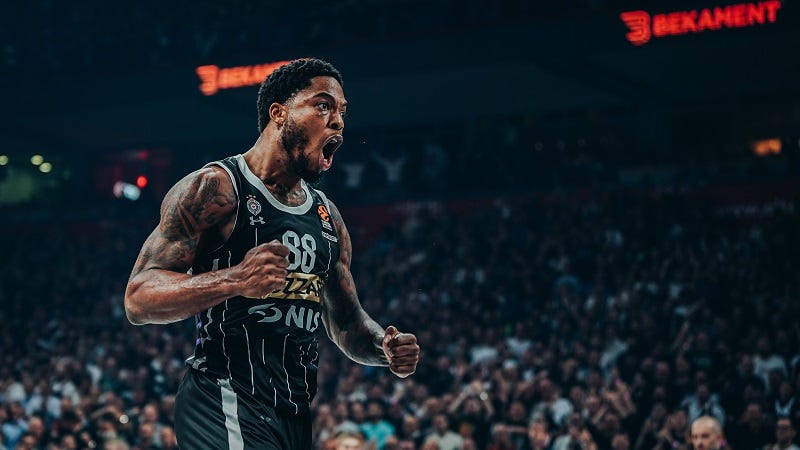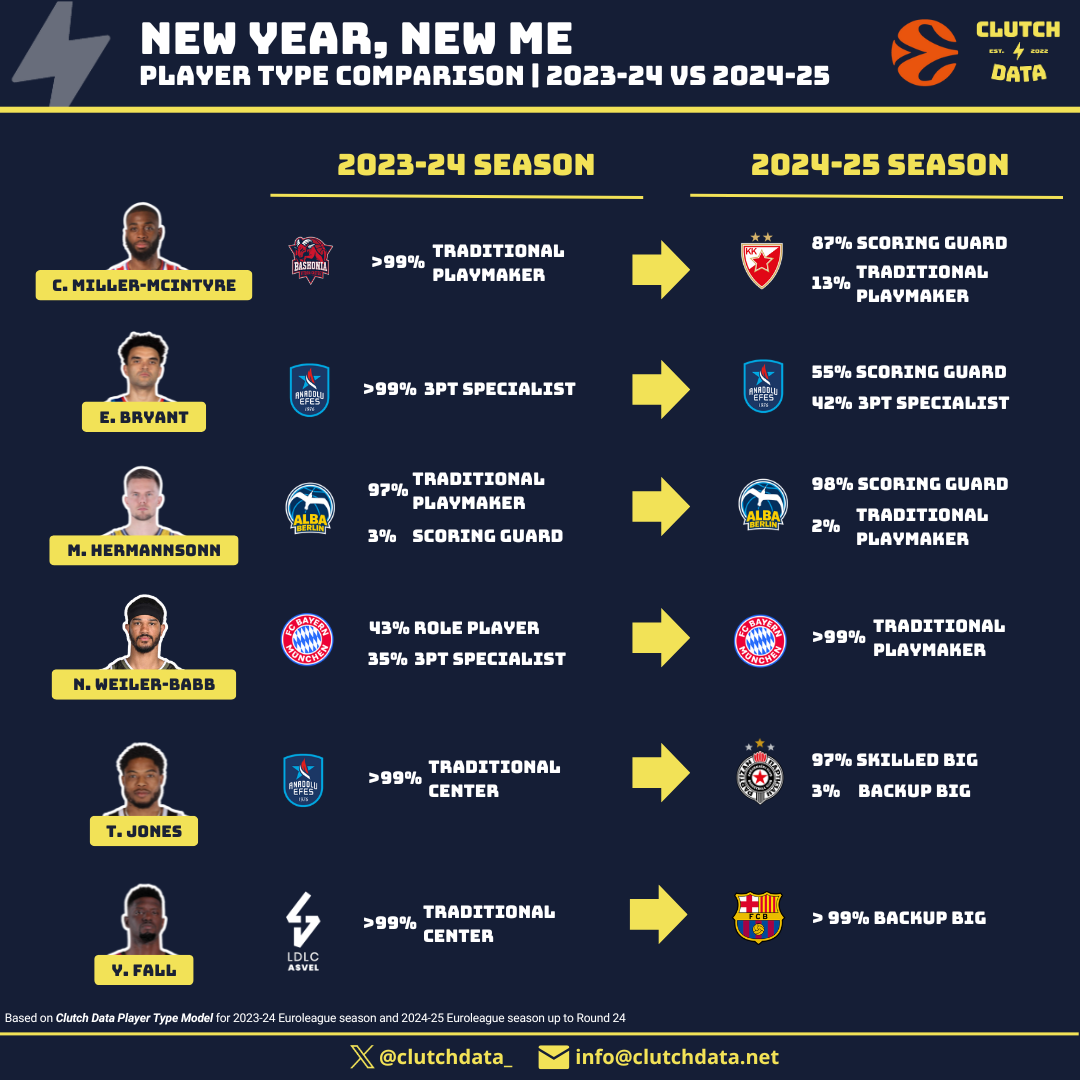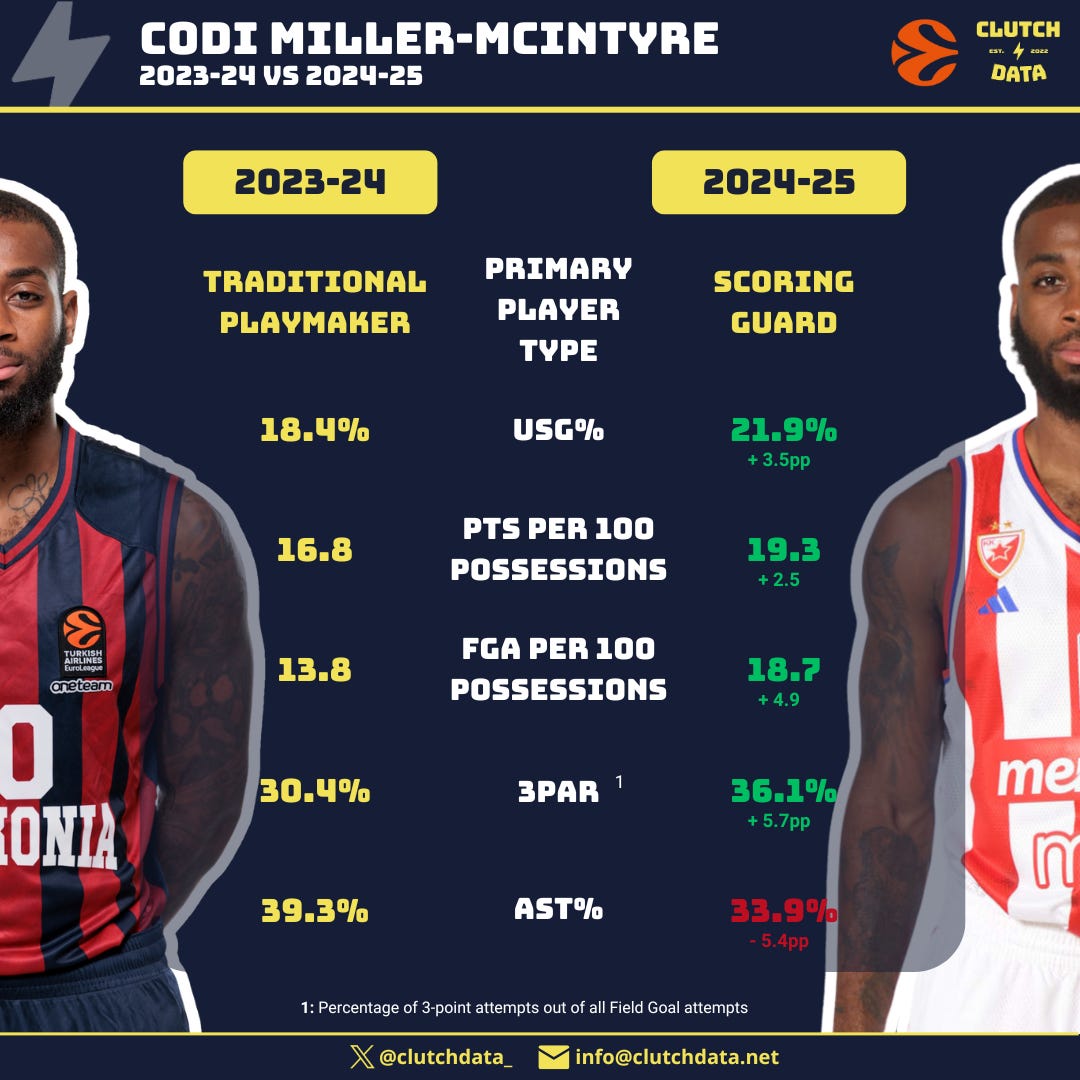Basketball may be played with five players on the court, but there are countless variations in playing style and role. A player's type is not static—it evolves as they develop new skills, mature, or adapt to a new system under a different coach. This season, several EuroLeague players have undergone significant transformations in their roles.
Below, we examine six notable cases of players who have redefined their game.
Codi Miller-McIntyre
At the start of the season, Codi Miller-McIntyre made the move from Baskonia to Red Star Belgrade. While he played as a Traditional Playmaker in Baskonia, he has transitioned into more of a Scoring Guard in his new role. He is taking more shots (+4.9 FGAs per 100 possessions) and scoring at a higher rate (+2.5 points per 100 possessions). His increased focus on scoring is further reflected in his higher three-point attempt rate (+5.7pp in 3FGA%) and a notable drop in his assist percentage (-5.4pp AST%).
Elijah Bryant
This season, Elijah Bryant has expanded his offensive arsenal, evolving from a Three-Point Specialist into a Scoring Guard. He now relies less on the three-point shot (-2.4pp in 3FGA%) and has seen a slight decline in three-point accuracy (-1.7pp in 3P%). However, his increased usage (+3.6pp) has translated into more scoring output (+3.9 points per 100 possessions), making him a more dynamic offensive weapon.
Martin Hermannsonn
Martin Hermannsonn has developed into the focal point for ALBA this year. Previously a Traditional Playmaker, he has transformed into a highly active Scoring Guard. His usage has climbed (+2.8pp), and his offensive production has surged (+6 points per 100 possessions and +14.5 in Offensive Rating). Notably, he has also improved his ball security, reducing his TOV%rate by 8.4pp, while becoming a more efficient scorer inside the arc (+5.0pp in 2FG%).
Nick Weiler-Babb
Nick Weiler-Babb has solidified his role within Bayern Munich’s revamped system. Last season, he was a hybrid between a Generic Role Player (43%) and a Three-Point Specialist (35%), with other player types having a less significant effect. Under new Head Coach Gordon Herbert he resembles a Traditional Playmaker, reflected in his significant AST% increase to 30.6% (+14.5pp). His AST/TO ratio has improved by nearly 50%, and he remains a defensive asset (+1.5pp STL%). Offensively, he has found new ways to contribute (+11.9 in Offensive Rating) and has become even more efficient, pushing his eFG% above 60% (+4.1pp).
Tyrique Jones
After a slow start to the season, Partizan has gained momentum, and one of the key contributors has been Tyrique Jones. Formerly a Traditional Center, he has transitioned into a Skilled Big. This shift is evident in his expanded playing time (+6.2 minutes per game) and increased usage (+5.2pp). His offensive production has skyrocketed, now standing at 28.9 points per 100 possessions (+6.7 points per 100 possessions). He is a formidable force on both sides of the paint with a 3.5% BLK% (+1.1pp) and a massive 34.2pp increase in Free Throw Rate, currently standing at 69%.
Youssoupha Fall
Not every transformation leads to positive outcomes and Youssoupha Fall’s move from ASVEL to Barcelona has come with challenges. His playing time has been drastically reduced (-11.8 minutes per game), limiting his impact. His offensive rebounding has suffered (-4.1pp ORB%), and his turnover rate has more than doubled (+13.4pp, now at 24.7%). Additionally, his Offensive Rating has dropped by 11.9 points, signaling a struggle to adapt to his new role within Barcelona’s system.
Player evolution is an integral part of basketball, and this season's EuroLeague has showcased some remarkable transformations. From Codi Miller-McIntyre's shift to a scoring role to Nick Weiler-Babb's emergence as a primary playmaker, these changes highlight the fluidity of player roles in response to team dynamics and coaching adjustments. While some, like Tyrique Jones, have thrived in their new roles, others, such as Youssoupha Fall, have faced challenges adapting. As the season progresses, it will be fascinating to see whether these transformations continue to shape their teams' success or lead to further adjustments down the road.













